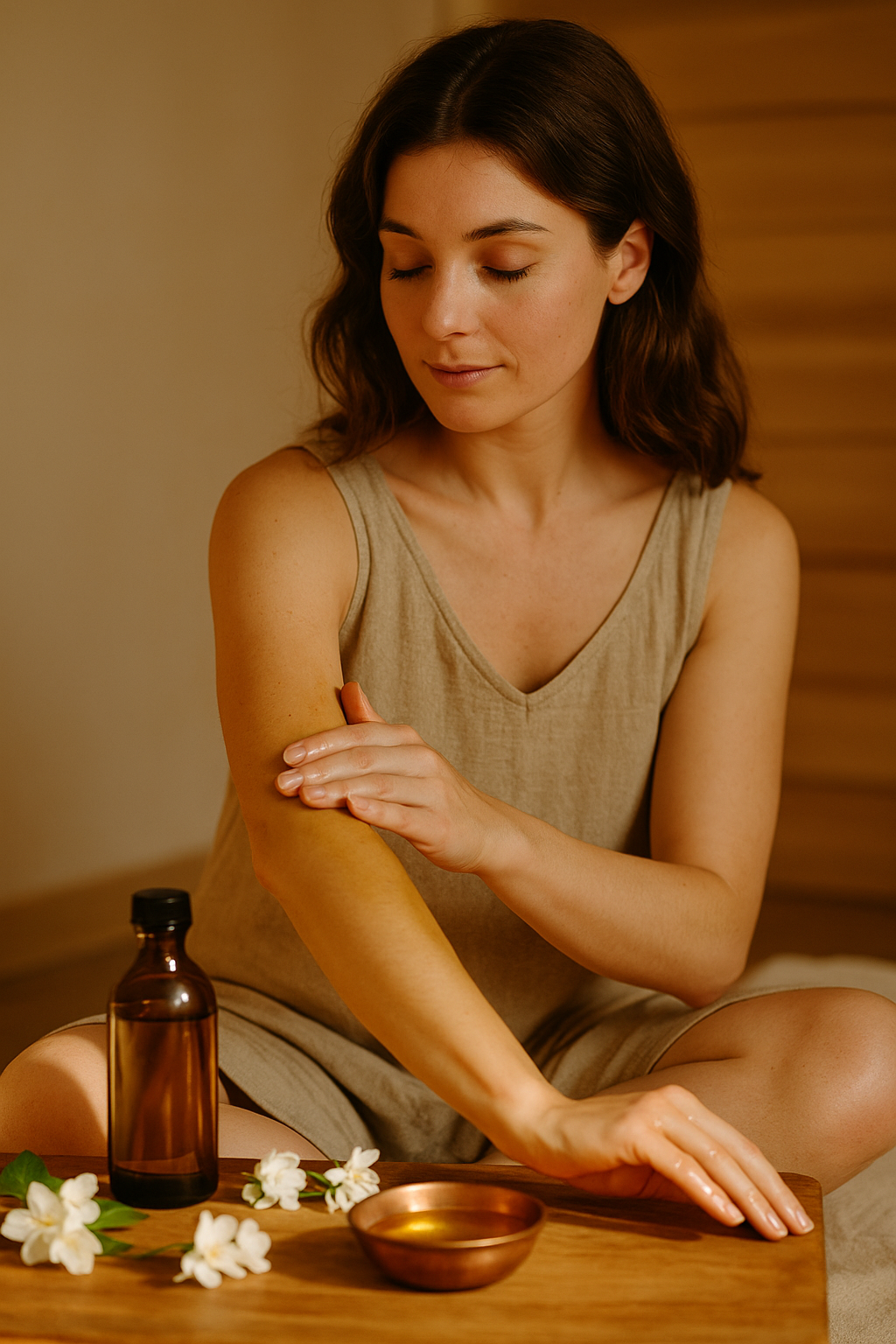
Ayurveda teaches that conscious touch can heal, balance, and deeply nourish the body. In this article, we explore Self-Massage with Ayurvedic Oils, a traditional practice known as Abhyanga, that you can easily do at home to calm the mind, improve circulation, and reconnect with yourself through tenderness and gentle awareness.
The power of Ayurvedic self-massage
In Ayurveda, oil is considered food for the skin. When applied slowly and mindfully, it not only relaxes the muscles but also stabilizes the doshas and strengthens the nervous system.
Moreover, this massage stimulates lymphatic flow and helps eliminate toxins. Therefore, it is recommended before bathing, at least two or three times per week.
Over time, it becomes a ritual of self-love — a sacred pause to return to your body with respect, softness, and gratitude.
How to choose your Ayurvedic oil
Each dosha resonates with specific oils that bring it back into balance:
- Vata: warm sesame or almond oil to provide grounding and warmth.
- Pitta: cooling coconut or sunflower oil to soothe and soften.
- Kapha: stimulating mustard or corn oil to activate and awaken circulation.
You can also add a few drops of gentle essential oils like lavender or sandalwood to enhance the relaxing effect.
Step-by-step guide to practice Self-Massage with Ayurvedic Oils
- Prepare your space. Choose a calm area with soft light and a pleasant temperature.
- Warm the oil slightly. This helps absorption and deepens its calming effect.
- Apply the oil mindfully. Begin with your head and scalp, using small circular movements.
- Continue with your face, neck, and shoulders. Keep your touch soft yet steady.
- Massage arms and legs with long strokes. Use gentle circles over the joints.
- Move to your abdomen and chest. Massage clockwise, breathing slowly.
- Finish with your feet. The soles are powerful energy points that promote rest.
Allow the oil to sit for a few minutes before showering with warm water.
Emotional challenges of conscious touch
When we begin to practice Self-Massage with Ayurvedic Oils, emotions we have stored in the body may arise — sadness, fear, or even resistance to touch ourselves. This is natural.
The body remembers and expresses what the mind often silences. If discomfort appears, breathe and be kind to yourself.
Let yourself feel without forcing, observe without judgment. Each stroke is an opportunity to reconcile with parts of you longing to be seen.
With time, this loving contact becomes a gentle daily need — a quiet conversation between your skin and your soul.
Benefits of self-massage
With regular Self-Massage with Ayurvedic Oils, you’ll begin to feel more grounded, calm, and present. The skin becomes more radiant, digestion improves, and sleep grows deeper.
Yet the true benefits go far beyond the physical. This ritual opens an inner space of stillness where emotions can rest.
Through constant touch, the body learns to trust, and the mind learns to let go. Each session becomes a whisper of tenderness, a loving invitation to care for yourself without hurry — to remember that living in your own body is an act of love.
Conclusion
Ayurvedic self-massage is a path of connection. More than a wellness technique, it is an intimate meeting with yourself.
Practiced with patience and gentleness, it allows the body to speak and the soul to breathe. Little by little, you discover that balance is not found outside — it blossoms from within.